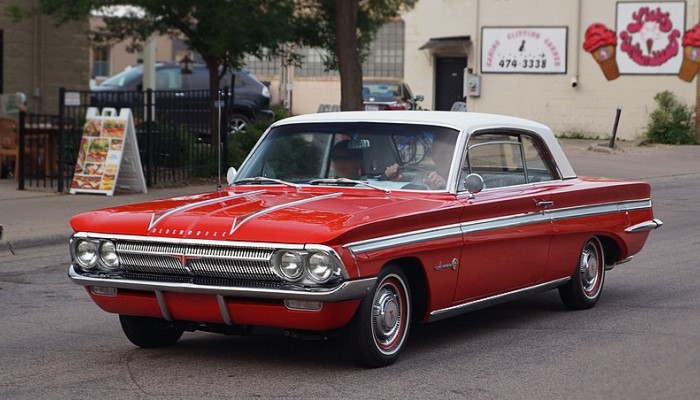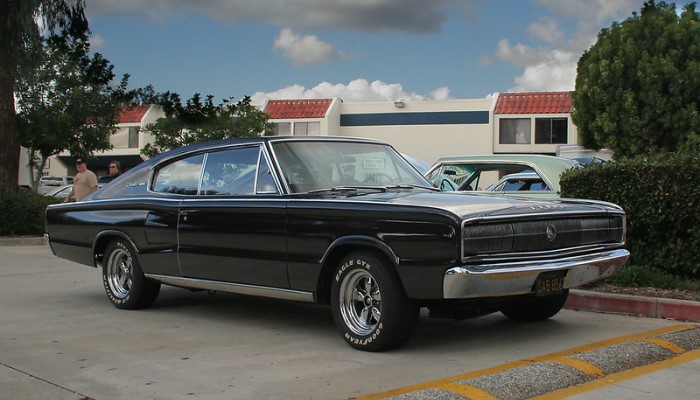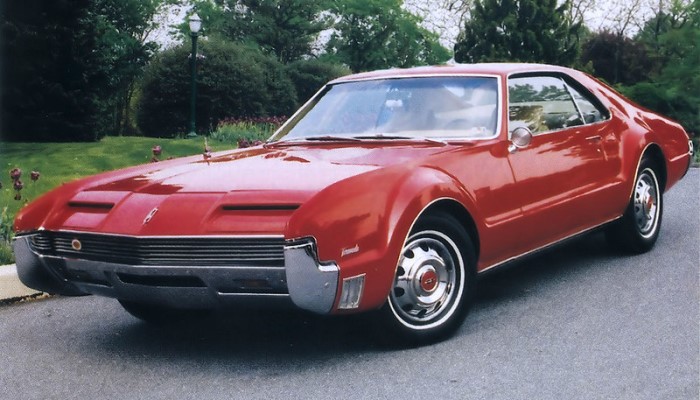1963 Buick Riviera
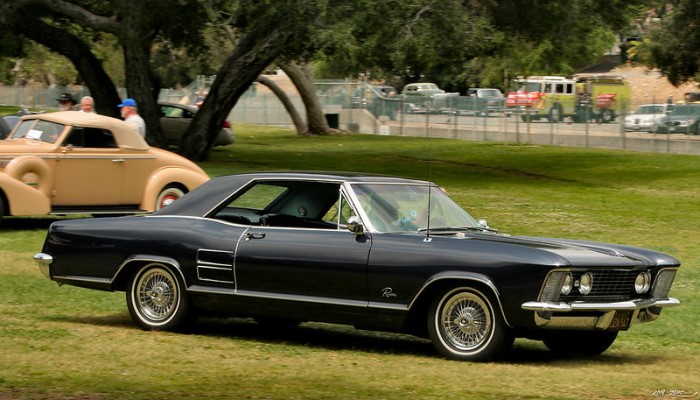
Photo: "1963 Buick Riviera - black - fvr" by Rex Gray
The Revival of Pure Americana
Considering that the Riviera design was officially approved in April 1961 and Buick management was eager to see the finished car in showrooms by the fall of next year, it’s not difficult to estimate that the engineers had little time at their disposal.
And as often happened with many great "Americans", the luxurious body was given a rather mediocre chassis; the production version of the XP-715 was built on a slightly shortened platform of full-size Buicks.
Moreover, shortened, in this case, does not at all mean "compact". With a wheelbase of just under three meters and an overall length of 528 cm, the Riviera was a very, very large car. At the same time, it is very elegant.
Let's say the car received such a charismatic accessory as doors without frames. For this purpose, specialists from Fisher Body, which received an order to manufacture the body of a sports Buick, had to put into practice a new method of assembling doors—more expensive and more troublesome than the traditional one.
Another characteristic feature of the car was the more than modest amount of chrome in the body trim. In the early 1960s, heavy chrome plating was still equated with the high status of a car, but Mitchell, despite all the objections, stood his ground, preferring a policy of reasonable abstinence.
In general, the only thing that didn't make it into the series from the designer's ideas were the headlights hidden behind the fairings, which opened electrically at night. Due to the terrible rush, they were replaced with double roundels that framed a honeycomb radiator grille in the style of the Ferraris of that time.
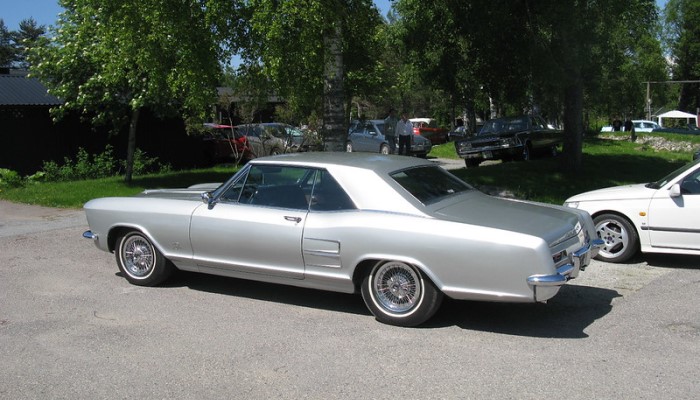
Photo: "Buick Riviera 1963" by nakhon100
But the sedan, alas, due to time and budget restrictions, had to be assembled from the interiors available to the company.
The dashboard of the Buick Electra sedan were taken as a basis, except that in accordance with the trendy Thunderbird, the Riviera received individual seats in the front rather than the solid sofa accepted at that time, as well as a center console, which was considered an attribute of luxury.
Engine and Specifications
In the context of the new Buick coupe, we even mentioned Ferrari, and, oddly enough, these comparisons, no matter how flattering, are not without certain grounds. Under the hood of the Riviera, the engineers stuck the most powerful engine at their disposal.
Even the base unit was a 401 cu in (6.6-liter) V8 with a power output of as much as 325 hp! For a relatively small surcharge, the number of horses under the hood could be increased to 340, which is exactly what the V8 developed, bored out to 425 cu in (7.0 liters)...
However, even in the basic version, the Riviera accelerated to 60 mph (96 kph) in 8.4 seconds and was only slightly short of reaching a maximum speed of 118 mph (191 kph). For a large and heavy car, and if the curb weight of the coupe exceeded 1900 kg, these are more than respectable characteristics.
Engine Specs
| Engine Type | V8 |
| Layout | Front engine, FWD |
| Displacement | 401 ci (6,572 cc) |
| Power | 325 hp |
| Power/Weight | 171 hp / Tone |
Performance
| 0-60 mph (0-96 kph) | 8,4 s |
| 0-100 mph (0-160 kph) | 24,2 s |
| 1/4 mile | 16,7 s |
| Top Speed | 118 mph (191 kph) |
In addition, the personal luxury Buick could boast quite powerful brakes, an optional automatic transmission (at first two-speed, a little later three-speed), and an extensive list of standard equipment. And all this, let’s not forget, was packed into the contours of an absolutely luxurious body.
Positive Reviews
The press received the car extremely favorably. American and even European automobile magazines, usually skeptical about cars from overseas, this time unanimously praised the Riviera.
Journalists noted the high quality of workmanship, a very spacious interior compared to the same Ford Thunderbird, excellent acceleration and braking dynamics by class standards, as well as a good balance of handling and comfort.
On the road, the Riviera felt a little stiffer than most of its contemporaries, but that's what you call pleasantly stiff. The few disadvantages include the low sensitivity of the servo-driven steering wheel and the antediluvian 2-speed automatic transmission. In general, representatives of the media agreed that Buick had never had a better car.
"It's hard to imagine a more enjoyable way of traveling than absorbing mile after mile in magical silence behind the wheel of a Riviera," Car and Driver magazine wrote in 1964. — The new Buick is a true embodiment of the concept of a personal luxury car!
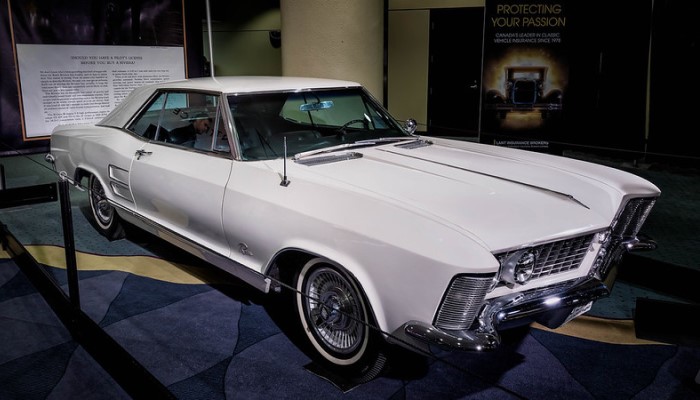
But the Riviera received even higher ratings from its competitors, and these praises for Bill Mitchell probably seemed like true music. For example, Jaguar founder William Lyons called the appearance of the new Buick "magnificent".
And industrial design guru Raymond Loewy said he believes the Riviera is "the most beautiful car in the United States since the Studebaker Avanti". Considering the fact that the Avanti was the work of Loewy himself, the value of this praise cannot be overestimated.
But perhaps the famous Sergio Pininfarina spoke better than others. The Turin maestro called the Riviera "one of the most beautiful cars in US history and an impressive example of the revival of purist American design."
Indeed, after the brutality of the Detroit Baroque era of the second half of the 1950s, the clean lines and lack of artificiality in the appearance of the Riviera seemed like a breath of fresh air.
Commercial Success, but Riviera Deserved More...
Sales of the Riviera started on October 4, 1962, and the base price of the model turned out to be $112 more affordable than the Thunderbird. It seemed that T-Bird was in trouble. After all, Buick's personal luxury coupe was confidently ahead of its direct competitor both in terms of driving characteristics and in matters of prestige.
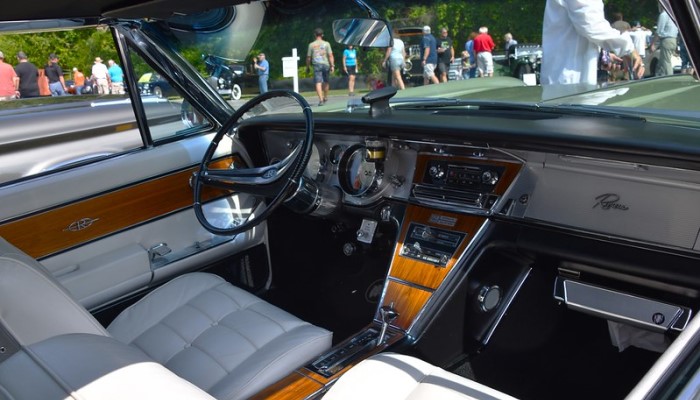
Photo: "Buick Riviera Sport Hardtop (1963)" by usf1fan2
Buick was only one step below Cadillac and Lincoln in the pecking order, while Ford was considered a mass brand. However, despite all the logical arguments, the Riviera never reached the level of popularity of the T-Bird.
Even in its debut year, there were three T-Birds sold for every two Rivieras sold, and the following year, the Thunderbird was twice as popular.
Why didn’t buyers fully share the enthusiasm of specialists and the press? It's not that easy to say. Some believe that Buick was let down by a less-than-ideal model name. Indeed, by the time the coupe debuted, the Riviera name had been worn down on the brand’s previous, not very remarkable models.
Others even nodded at the car's exquisite design! They say that ordinary Americans, inexperienced in matters of design, found the deliberate pretentiousness and sometimes rough kitsch of the Thunderbird more attractive than the sophisticated elegance of the Riviera. Who knows, who knows...
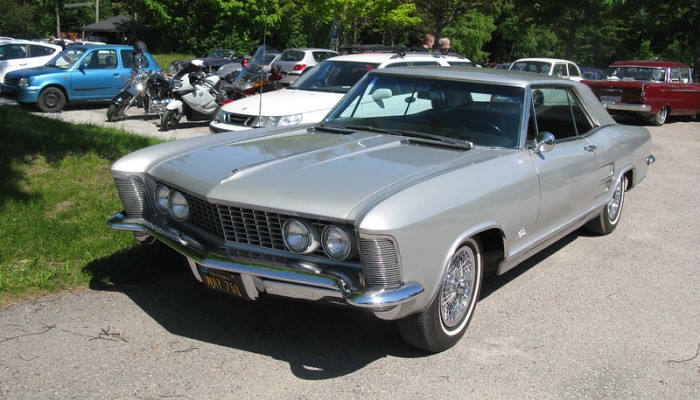
Photo: "Buick Riviera 1963" by nakhon100
One way or another, over 120,000 units of the first-generation coupe, in any case, became a success for Buick. Of course, Riviera deserved more, but this result convinced GM that the chosen direction was correct.
Very soon, the "personal luxury" Buick was joined by the Oldsmobile Toronado and Cadillac Eldorado, which were similar in spirit and concept. The Riviera itself took on the role of the brand’s most prestigious car for a long time; different generations of the model remained in the production program right up to 1999.
Value in Today's Market
When determining the current value of a 1963-65 Buick Riviera, several factors come into play. One of the most significant factors is the overall condition of the vehicle. Originality, mileage, and any modifications or restorations done over the years greatly impact its present value.
Moreover, the rarity of this particular model also contributes to its value. With only around 40,000 Rivieras produced in 1963, finding one in pristine condition can be quite a challenge. As a result, the scarcity of these vehicles raises their price tag.
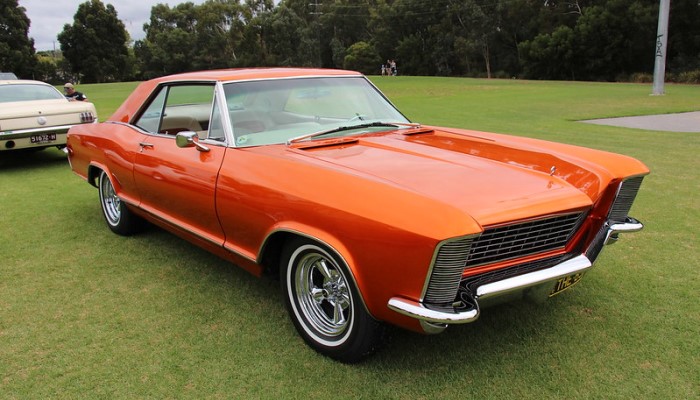
Photo: "1965 Buick Riviera 2 door Hardtop" by Sicnag
Additionally, the demand for classic cars, especially those from the 1960s era, has been steadily increasing. Many car enthusiasts and collectors hold a special admiration for the sleek, stylish design and powerful performance of the 1963-65 Buick Riviera. This growing demand elevates their value in the market.
With all these factors considered, the current value of a 1st Gen Buick Riviera can range anywhere from tens of thousands to even hundreds of thousands of dollars, depending on its condition, originality, and level of restoration. Auction sales and private sales can also influence the final price, as buyers and sellers negotiate based on these factors.
In conclusion, the value of a 1963-65 Buick Riviera today is captivating due to its rarity, desirability, and the overall condition of the vehicle. Car enthusiasts and collectors alike are drawn to this classic American beauty, making it a true gem in the automotive world.

Unique Car Zone Team
A group of several fans of everything that moves on four wheels, a few article creators, a couple of marketing strategists, designers, web developers, and lots of coffee.




